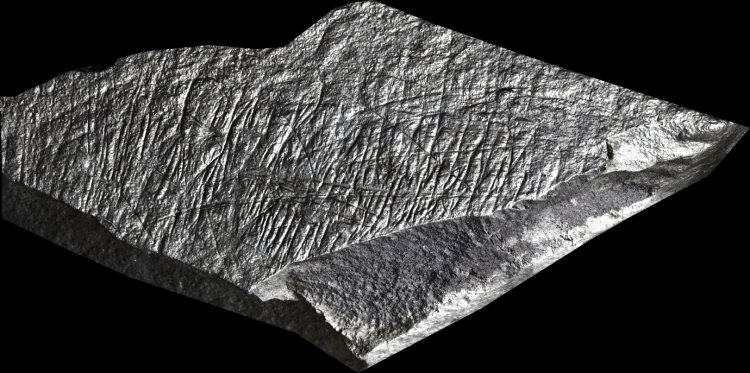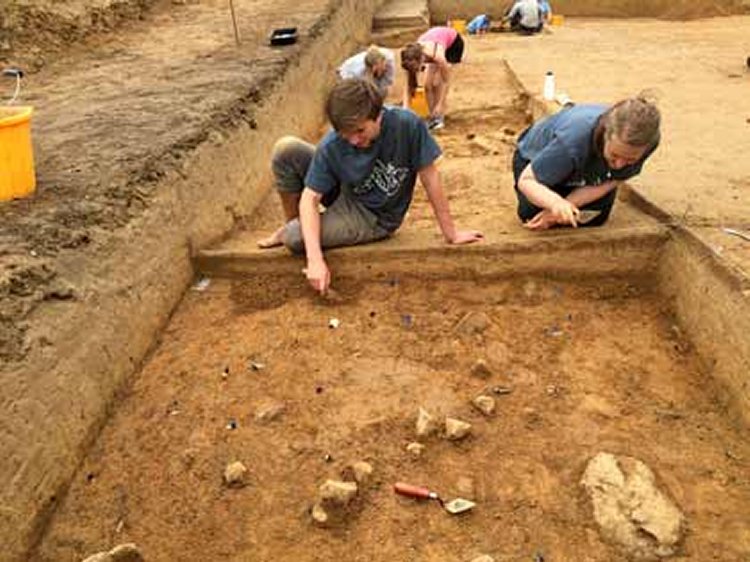AncientPages.com - Archaeologists find Ice Age engravings, tools and burnt bone within "very rare" British settlement at Jersey.
Archaeologists say hunter-gatherers from the Magdalenian culture of between 16,000 and 13,000 years ago lived at a clifftop site in Jersey where dense concentrations of tools, burnt bone and engraved stone have been found.
More than 5,000 scattered stone pieces have been discovered at Les Varines, a St Saviour site overlooking landscapes drowned by the English Channel. Set between a sea stack and rising ground, the settlement offered protection from the weather to its late Ice Age inhabitants.

A brief visualisation of an exotic stone found at a 15,000-year-old hunter-gatherer settlement in Jersey. The site, Les Varines, offers great views over landscapes now drowned by the English Channel. It is located in the Jersey parish of St Saviour and has produced over 5,000 scattered stone artefacts during the past five years of excavation, but in the summer of 2015 the team unearthed denser concentrations of tools and burnt bone and, for the first time, fragments of engraved stone. These are currently under study in an attempt to unravel the significance of these unique finds. Credits: UCL/Dr Sarah Duffy
“We knew from the beginning that Les Varines was an important site,” says Dr Chantal Conneller, of the University of Manchester.
“There is nothing of its size or scale elsewhere in the British Isles but there are parallels in France and Germany.
“Previously we had recovered stone artefacts disturbed by later mud flows, but now it seems we have found the well preserved edges of the settlement itself."

UK archaeologists working in Jersey have found the remains of a 15,000-year-old hunter-gatherer settlement
© Dr Sarah Duffy
Experts are closely examining three exotic stones found in a trench corner during the latest excavations in the five-year project, believed to represent “sophisticated” stone age technology or works of art.
“Incised stones can be common on Magdalenian camps. Many are known from sites in the Germany and the south of France, where they are often seen to have a magical or religious use," says Dr Conneller.
“They are rare in Northern France and the British Isles, making this a significant find. Although we are not yet sure of the exact age of the campsite, it might well represent some of the first hunter-gather communities to recolonise the north of Europe after coldest period of the last Ice Age.”
The fragments were sealed within an apparent ancient landsurface and associated with possible paving slabs
© Dr Sarah Duffy
Dr Ed Blinkhorn, of University College London, led the excavations. “This has been the culmination of five years of patient work, tracing thousands of flint tools within slope deposits back to the mother lode,” he says.
“We knew a significant hunter-gatherer camp lay in this field and it seems we’ve finally found it.”
The dig has been a productive one on an island known for producing impressive early stone age finds.
“We are at an early stage in our investigation but we can already say the stones are not natural to the site,” says Dr Silvia Bello, of the Natural History Museum, who is now studying the fragments.
“They show clear incised lines consistent with being made by stone stools, and they do not have any obvious functional role.
“Engraved works of abstract or figurative art on flat stones are part of the Magdalenian cultural package. One exciting possibility is that this is what we have here.”
AncientPages.com
source: UCL





